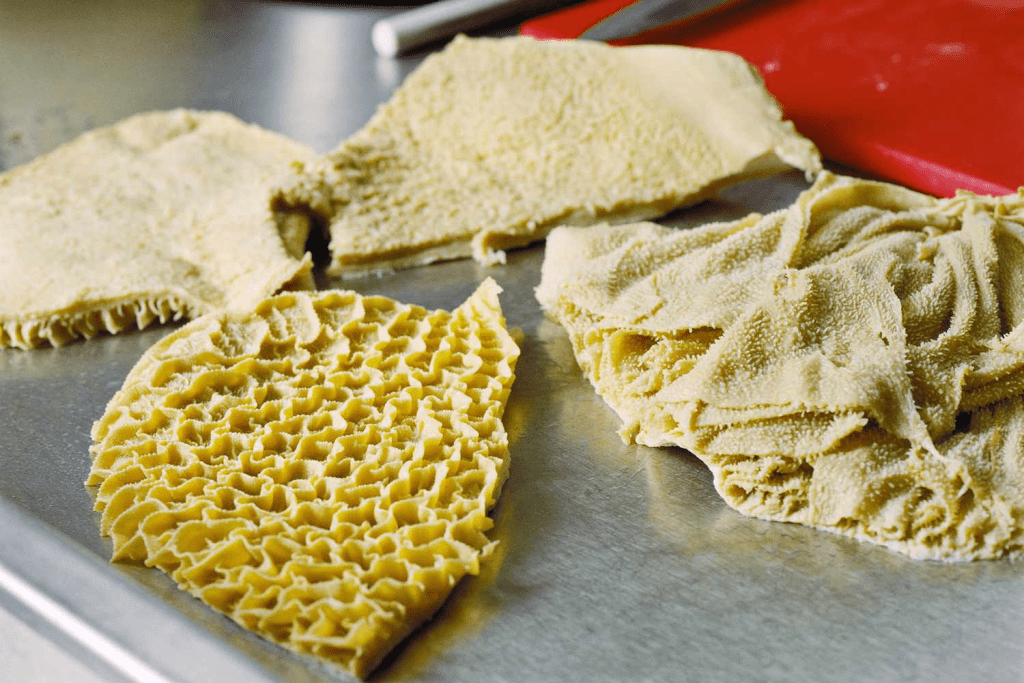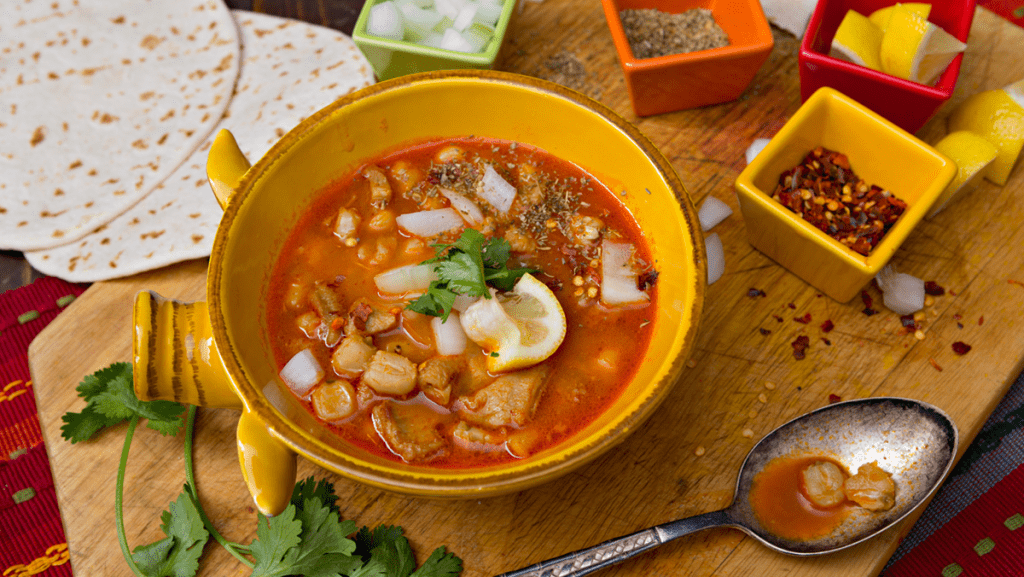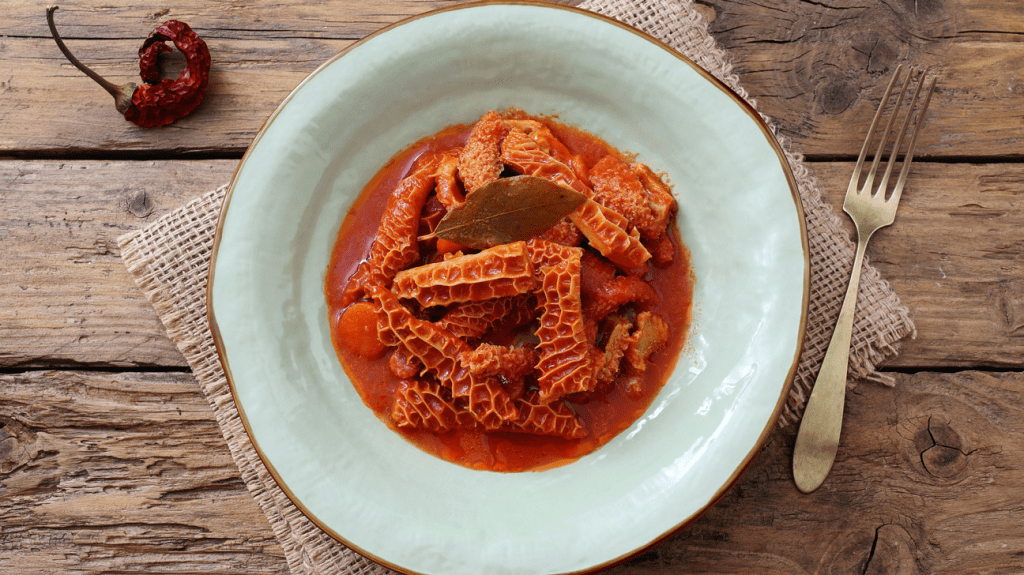Understanding What Tripe Really Is
If you’ve ever stumbled upon a bowl of phở with an oddly patterned meat or stared into a spicy stew wondering what that chewy, spongy ingredient was—it was likely tripe. Specifically, honeycomb tripe, one of the four chambers of a cow’s stomach, known for its distinct texture and appearance.
Tripe comes from the reticulum, the second chamber of a cow’s stomach. It’s called “honeycomb” tripe because of its hexagon-like, netted structure that resembles—you guessed it—a honeycomb. This part of the cow’s digestive system isn’t just a biological marvel, it’s also a global culinary staple.
Now, don’t let its origin scare you off. Tripe has been loved for centuries across multiple cultures for one key reason—it’s delicious when done right.

Why Tripe Deserves a Place on Your Plate
Tripe is one of those underdog ingredients that gets overlooked until someone cooks it low and slow. On its own, it’s mildly flavored, which makes it the perfect canvas for spices, broths, and sauces. The trick? Preparation.
Cleaning tripe is essential. Raw tripe has a strong odor and needs to be thoroughly rinsed and blanched before it’s ready for cooking. Once cleaned, it’s simmered for hours until it becomes tender, slightly chewy, and full of flavor—kind of like a sponge soaking up all the deliciousness around it.
Whether sliced thin for soup or stewed in tomato sauce, tripe always brings something special to the table—texture, tradition, and taste.
Video : Heart. Royal recipe…
Vietnam’s Beef Noodle Classic
In Vietnam, beef tripe plays a starring role in one of the country’s most beloved dishes: pho. While pho tai (rare beef) and pho bo vien (beef meatballs) may get more attention, pho tripe offers a unique texture and deep flavor that fans swear by.
Here, tripe is sliced into thin ribbons, thoroughly cleaned, and gently simmered in the same rich beef bone broth as the rest of the phở toppings. It adds a subtle chew and soaks up the flavor of star anise, cinnamon, roasted ginger, and onion that define a traditional pho.
Locals love to dip it into a side of hoisin and chili sauce, or enjoy it with lime and herbs. It’s not just meat—it’s part of the soul of the dish.
Menudo: Mexico’s Spicy Hangover Cure

Cross the Pacific to Mexico, and tripe takes on a bolder persona in the form of Menudo, a fiery red soup often considered the country’s ultimate hangover remedy.
Made with honeycomb tripe, hominy, chili peppers, and spices, Menudo is slow-cooked to build flavor and soften the tripe. It’s typically served with lime wedges, chopped onions, cilantro, and warm tortillas. The result? A rich, comforting bowl with heat, heart, and history.
This isn’t your average soup—it’s a family recipe passed down for generations, usually reserved for Sundays or special gatherings.
Trippa alla Romana: Italy’s Love Letter to Offal
In Rome, tripe doesn’t just show up—it takes the spotlight in Trippa alla Romana, a dish so iconic it’s featured in almost every traditional trattoria in the city.
Roman chefs braise tripe slowly in tomato sauce, white wine, onions, garlic, and a generous handful of mint—yes, mint. The herb adds freshness that balances the richness of the stew. To finish it off, a sprinkling of pecorino Romano cheese ties it all together.
The dish is hearty, rustic, and deeply satisfying. In Italy, eating tripe isn’t weird—it’s an honored part of cucina povera, or “peasant cuisine,” which transforms humble ingredients into soul-warming meals.
Video : How To Clean Beef Honeycomb Tripe (Babat)
Callos: Spain’s Bold, Meaty Stew
Spain takes a similarly rich approach with Callos, a slow-cooked stew often made with tripe, chickpeas, chorizo, and blood sausage. Popular in Madrid and across the Iberian Peninsula, this dish is bold, smoky, and unapologetically flavorful.
Callos is especially popular during colder months, when people crave something warm, meaty, and deeply comforting. The spices from the chorizo seep into the broth, while the tripe soaks up every ounce of flavor.
Served with crusty bread or a side of rice, Callos is proof that tripe can be luxurious, layered, and absolutely satisfying.
Why Tripe Keeps Winning Hearts Around the World
So why has honeycomb tripe stuck around in so many cuisines? Because it hits the sweet spot: it’s affordable, nutritious, and packed with culinary potential. Rich in protein and minerals, tripe is also lower in fat than most red meats.
And let’s not forget the cultural legacy—these aren’t just meals, they’re traditions. They tell stories of families, resourcefulness, and flavor born out of necessity. Tripe reminds us that some of the most meaningful food doesn’t come from expensive cuts—it comes from making the most of what we have.

Conclusion: A Humble Ingredient with Global Prestige
From Vietnamese street food stalls to elegant Roman kitchens, honeycomb tripe is more than a quirky culinary footnote. It’s a testament to how culture and creativity can transform something simple into something truly special.
It might not be for everyone at first glance, but give it a chance—just once—and you’ll see why so many cultures treasure it. It’s not just a dish. It’s history, flavor, and comfort all wrapped into one unforgettable bite.